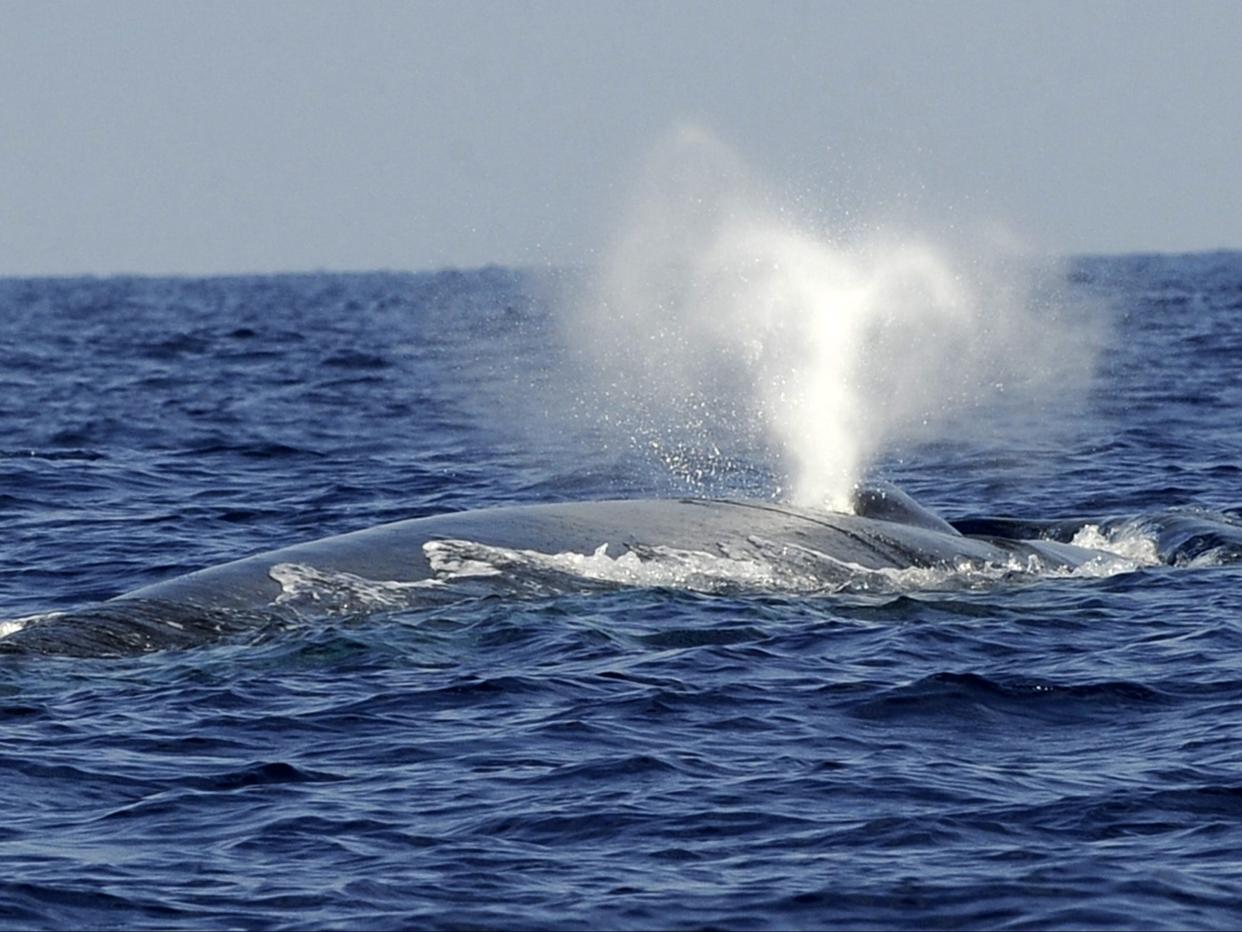Animation shows week in life of blue whale as it tries to avoid fishing ship congestion

Blue whales are an endangered species with no more than 25,000 living across the world
(AFP via Getty Images)An astonishing new graphic shows how blue whales face excessively reduced mobility due to an overrun of hundreds of fishing boats in one of the endangered species’ main feeding grounds in Chilean Patagonia.
The video, created by marine biologist Luis Bedriñana-Romano of the nongovernment organisation Centro Ballena Azul (Blue Whale Centre), was designed to show a week in the life of a single whale as it tried to feed while attempting to circumvent up to 1,000 boats in part of the eastern South Pacific.
It was released as part of a study, published in the journal Nature this week, which found that 89 per cent of the Gulf of Ancud’s ships – an inner sea famous for attracting whales to feed, and which the animation is based on – were “aquaculture fleets”, specifically belonging to the salmon industry.
This is a result of northern Chilean Patagonia (NCP)’s extensive salmon farming industry, the study’s authors noted, which, they said, “has a negative effect on biodiversity”.
Researchers tagged 15 blue whales during NCP’s austral summer to collect the data while satellite tracking and vessel traffic data, released by the Chilean fisheries service Sernapesca, allowed them to locate where ship strikes were most likely to occur.
The whales’ movements were then reviewed and visualised to pinpoint “priority areas for blue whale conservation” which “overlapped with vessel traffic”.
Mr Bedriñana-Romano used a blue point to represent the whale, viewed over a seven-day period between 22-29 March 2019 as it darts between the non-stop heavy flow of boat traffic – represented by an array of orange points and lines.
He, along with co-author Rodrigo Hucke-Gaete, told reporters their research indicates blue whales give their undivided “attention” and “energy” to feeding, which “makes them more prone to being hit by boats and particularly at night”.
“Any incident of collision [resulting in] death of these animals represents a real threat to their conservation,” Mr Bedriñana-Romano added.
The pair are calling on Chile’s fishing industry to work with them to implement protective measures to avoid fatal collisions for blue whales, where the most recent such incident occurred in 2020 right here in Britain.
Speaking to The Independent, marine and global change professor Steve Simpson also pointed to the issue of noise pollution caused by boats – and how it interferes with the “long-range acoustic communication” blue whales use to “maintain family bonds and undergo ocean-wide migrations”.
“The frequencies they use to communicate overlap with the sounds produced by ships and other vessels, so noise pollution can cause stress, drive whales away from busy shipping areas, and cause 10-fold reductions in communication distance,” he said.
Commending the findings, Prof Simpson, of Exter University, said: “This study will help to better manage our use of this important blue whale feeding area, so we can control industrial activity to occur in harmony with the magnificent whales that share these waters.”
There was a significant rise in the number of blue whales spotted in the Atlantic last year, but world’s largest mammals are still considered endangered with no more than 25,000 thought to be living across the world.
Read More

